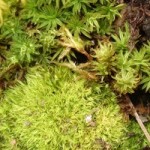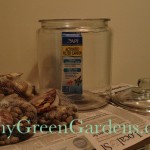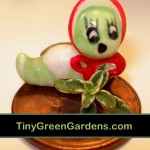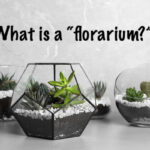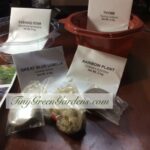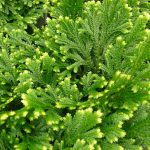Buying Moss
A Brief Guide To Buying Moss
When it comes to buying moss, particularly over the Internet, people do not always understand what exactly they are buying. While most moss products are a natural plant-based item, what they can be used for varies. The terminology seems to often be used interchangeably and many folks appear to be getting it wrong. Our best advice when buying moss online is to pay close attention to the description and read the reviews carefully.
For the most part, there are three types of moss – live moss, preserved moss and dried moss.
Live Moss
 This is the most obvious but also the most common mistake people make when buying moss. Many assume they are buying live moss that simply needs rehydration when in fact the moss is dead.
This is the most obvious but also the most common mistake people make when buying moss. Many assume they are buying live moss that simply needs rehydration when in fact the moss is dead.
Live moss is fully hydrated and in a growing phase. It generally has a lush, green color and is not sold in air-tight bags that have been sitting on a shelf somewhere. Quite often, live moss is picked to order rather than pre-packaged.
The picture to the right is one of my own moss garden experiments a few days after I first collected it from our garden.
I have purchased moss from Appalachian Emporium. It’s always been well-packaged and arrived in good condition. Living moss, rather than preserved, is the best choice for vivariums.
If the moss you have appears in bright colors i.e. red, blue, purple, orange, it is probably preserved moss. When you see moss packaged in an air-tight bag, it is preserved rather than dried. Many of the people selling reindeer moss are selling dyed and preserved moss. Supermoss Preserved Reindeer Moss is among the prettiest I’ve seen being offered. They also offer it in bright red, black, mango, forest green, chartreuse, purple, royal blue, natural, and dusty rose. I was lucky to score two colors of this preserved reindeer moss at a thrift store. The colors are every bit as vibrant as the photos and it was surprisingly soft and airy.
Another great option for preserved moss is the SuperMoss Preserved Moss Mix. According to the product description, it contains Spanish Moss in Grass Green, Reindeer Moss in Chartreuse, Sheet Moss and Lichen Parmelia with tufts of Fuchsia Reindeer Moss. I’ve seen this package in our local garden center and it would make a wonderful foundation for a non-living terrarium or a wonderful table decoration when placed in a glass jar.
- Contains Spanish Moss in Grass Green, Reindeer Moss in Chartreuse, Sheet Moss, and Lichen Parmelia with tufts of Fuchsia Reindeer Moss
- Would look beautiful for table centerpieces and crafting!
Preserved moss, particularly any that has been dyed is a great choice to add color or texture to an open terrarium (it can mold in a closed environment), fairy or moss garden. However, it should be kept dry to maintain its color and keep its texture and shape. If allowed to become too wet, preserved moss can mold or rot. Additionally, some dyes might run if the moss is gotten too wet – best to use preserved and heavily dyed reindeer moss only with other non-living components or at least in a way that it will not get wet.
Some preserved moss is used to provide moisture for vivariums. The premise is the moss is used almost like a sponge. It is thoroughly moistened, the water is squeezed out like a sponge, and then the moss is placed in the animal enclosure. Moss used this way will eventually rot and some folks recommend only using it 2 or 3 times before disposing of it.
Dried Moss
With dried moss, it can be rehydrated and will return to life. Dried moss is a dormant plant that with tender loving care can begin growing again.
Here’s where things can get really tricky. Much of the moss being sold as dried moss has in fact been preserved and no amount of hydration will bring it back to life. Your best bet when buying moss online is to buy from reputable sellers with good feedback and customer feedback comments that substantiate their claims of selling dried, not preserved moss.
Non-Terrestrial Moss & Stuff That’s Not A Moss
Not all moss can be found growing on land, trees or structures. Some moss is actually aquatic. And then there’s other stuff that isn’t actually a moss at all.
Moss Balls
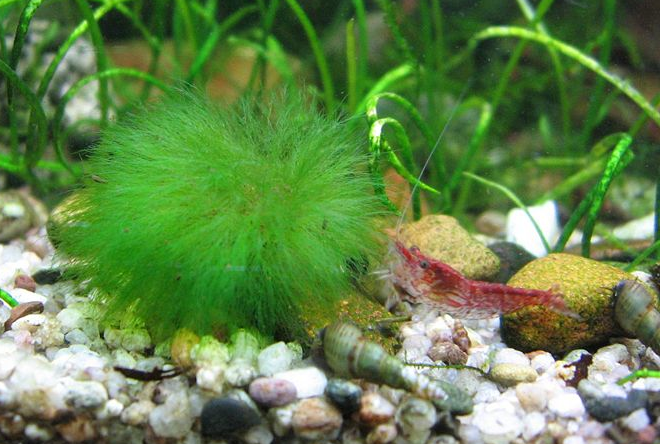 When I originally wrote this article about moss, I was truly tempted to buy one of those floating, lives in water moss balls like this beautiful specimen photographed by zikamoi. While not fairy garden material (maybe a mermaid garden would work?), there is something charming about the moss ball and moss ball terrariums I’m seeing over on Amazon. Seems a bit like having a fish without uhm, the poop.
When I originally wrote this article about moss, I was truly tempted to buy one of those floating, lives in water moss balls like this beautiful specimen photographed by zikamoi. While not fairy garden material (maybe a mermaid garden would work?), there is something charming about the moss ball and moss ball terrariums I’m seeing over on Amazon. Seems a bit like having a fish without uhm, the poop.
[Fast forward to 2024, it would appear that while marimo moss balls are still available, they are not as widely sold. My guess would be they oversold and over-marketed them around the time I had originally written this article.]
I doubt that anyone visiting Tiny Green Gardens wouldn’t know the difference between a living ball of moss and a styrofoam ball covered in preserved moss. But, after seeing how many people purchased live miniature plants and complained because they were actually alive and not silk or plastic…anyway, I’ll just throw this out there. Just remember, not all moss balls are created equal and remind everyone to read product reviews carefully – not every negative review is deserved.
But, just to keep things interesting, there’s a wonderful tutorial from Clarissa of Creative Green Living on how to make a living moss ball.
Just, please pay attention when shopping for moss balls. They can be faux moss glued onto rocks or styrofoam – super cool looking but not something you would want in a terrarium. Based on consumer reviews, some faux moss-covered rocks may be being sold for use in aquariums but may be better saved for Starting a New Fairy Gardenfairy gardens.
Reindeer Moss
Reindeer moss is actually a lichen. When you see the brightly colored, dyed moss in craft stores, it is often preserved reindeer moss. Buying reindeer moss can be tricky. Even some sellers do not appear to understand the difference between living, dried and preserved moss; or in this case lichen.
Irish Moss
Irish moss is actually a species of red algae. Some recipes use it as a thickening agent.
Spanish Moss
Spanish moss, that wonderful stuff the grows in long tendrils from trees is also not a moss. It actually is more closely related to bromeliads. Spanish moss is an air plant that gets its nutrients from the air and rainfall.
Sphagnum Moss
Sphagnum moss is an actual type of moss with over 120 species. It can store water, even when dead, which is why it is often used as a planting medium. For the most part, when you buy sphagnum moss it is dried. Rehydration will not bring it back to life. When I purchased some Partridgeberry vine from Eileen, she packaged it in live sphagnum moss which was a wonderful bonus.
If the sphagnum moss on offer is dried (most likely) and a nice green color, it’s probably dyed. Be careful if being purchased for vivariums or where green colorant could stain.
- Sold in brick form which requires rehydration. Will expand to a surprising amount of moss
- Often used to maintain orchids, in vivariums and when soil needs to be ammended to hold more water.
Buying Moss – Best Advice
When it comes to buying moss, our best advice is to do your homework. Check out the seller. Read the reviews. And research the environmental conditions the species you are buying requires. While moss could be a beautiful addition to your fairy garden or terrarium, it might not have the same moisture, sun and temperature requirements as the rest of the plants you are growing. As an alternative, with so many wonderful species of moss to chose from, perhaps building a moss garden might give you the best of both worlds.





